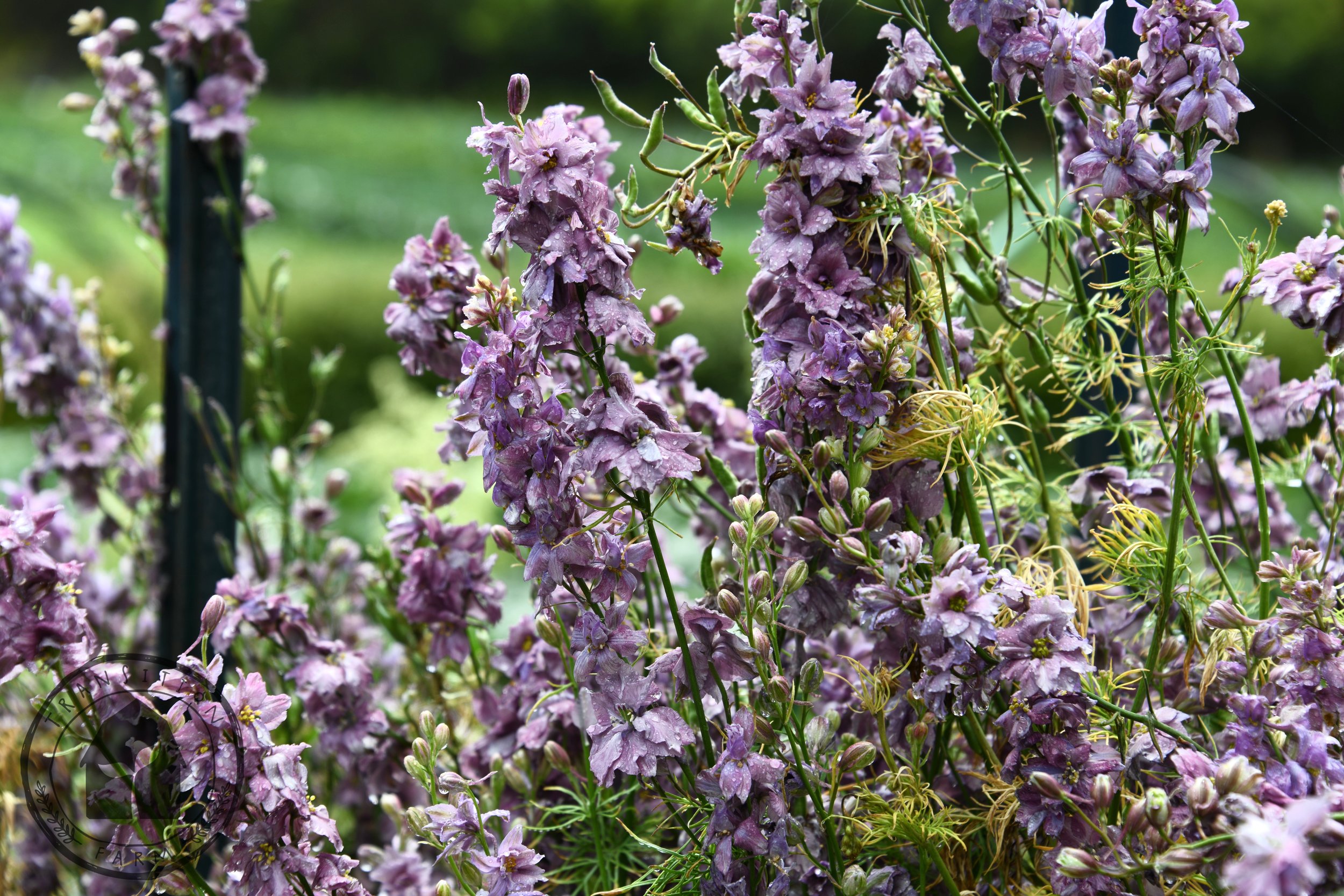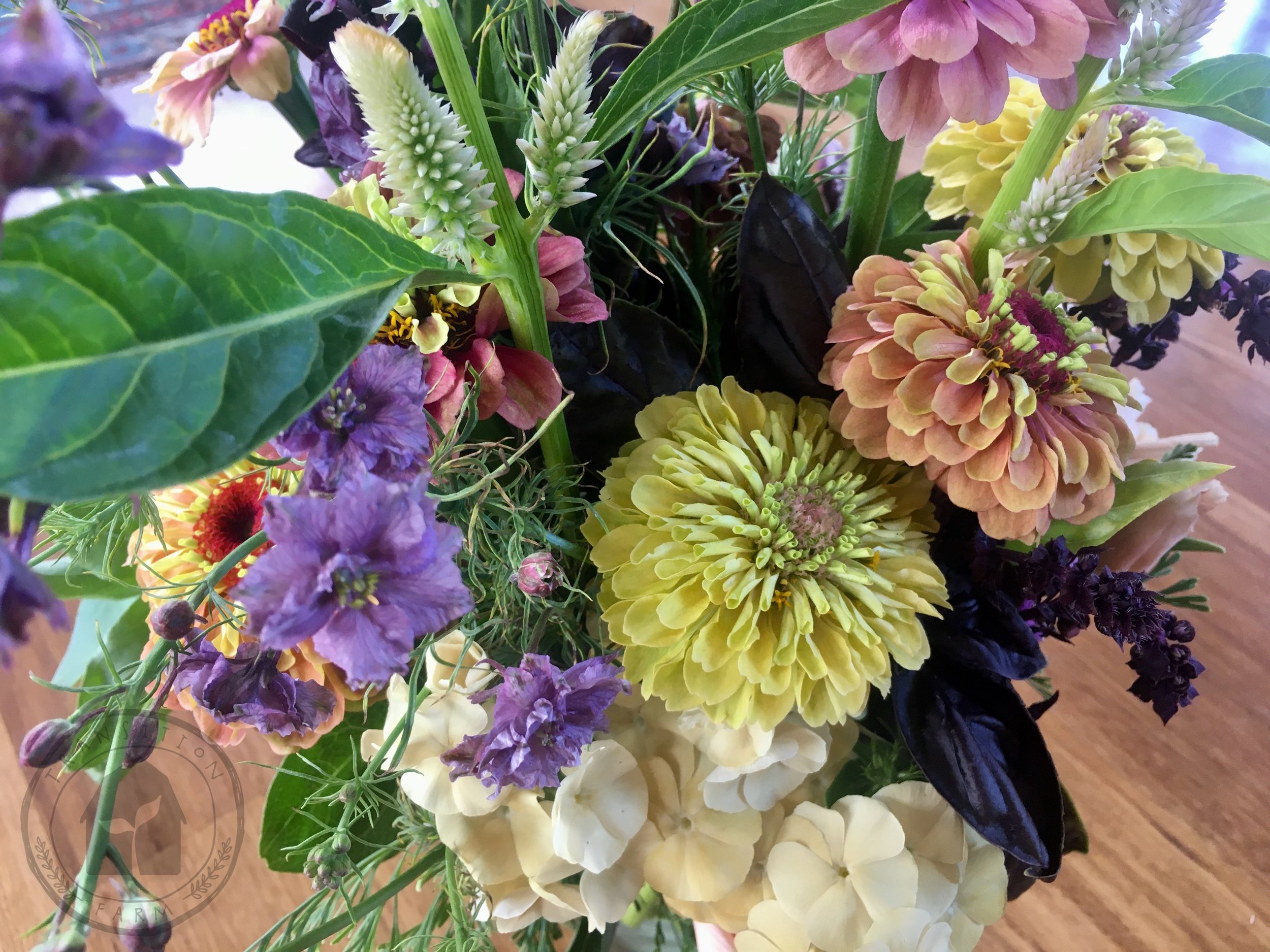Spring's Elegant Spires- LARKSPUR - Germination and Sowing Tips
/Larkspur are one of our favorite late spring/early summer spires. They are fantastic cut flowers with a long stem length and a two week vase life. We love them arranged by themselves or in combination with pale foliage and lime green flowers, roses, peonies, bells of Ireland, poppies, celosia, zinnias. With an array of colours, they are quintessential cottage garden flowers occupying herbaceous borders for centuries and much sought after by floral designers.
TIMING
One of the easiest ways to ensure you fill the flower gap between spring bulbs and warm season blooms is to sow hardy annuals in Autumn. Especially when we have a cold, wet spring or an unusually warm spring, autumn sown hardy annuals provide beauty and a weather buffer in your cut flower garden .
OPTIMUM GERMINATION
Larkspur are an easily grown, hardy, self seeding annual - often returning year after year in the autumn from seed dropped by the plant after blooming.
Larkspur require cooler temperatures to induce germination - 14-21 days of soil temperature below 13C. They also prefer to establish ahead of the darkest, coldest days of late autumn and winter. They requiring a 40-50 day verbalization period (temperatures between freezing and 10C) for optimum bloom production.
While this soil temperature is hard to achieve in early autumn in many areas of Australia, we use a trick shared by great flower growers in Texas, USA, Pamela and Frank Arnosky.
EASY GERMINATION TIP - PRIMING THE SEED
2 weeks before you want to sow your larkspur seed, put it into a container with an airtight lid or a ziplock bag. Mist the seed with enough water that it is all fully coated with moisture. Ensure there are no extra pools of water in the bag. Close it up and put it in the fridge. Check it the next day to ensure all water has soaked into the seed. You want seed that flows and is not stuck together in clumps and you want the seed to have absorbed sufficient moisture. This is called priming the seed. Return it to the fridge.
In about 7-14 days, the seed will be ready to germinate.
SOWING
Direct Sowing
Sow 6mm deep (darkness is required for germination) in your prepared garden soil. Larkspur thrives in rich, well-drained, slightly alkaline soil. Sow in early Autumn wth primed seed to take advantage of the winter cooling need for flower production. Larkspur can also be sown in late winter - expect blooms 11-13 weeks after sowing.
Transplanting
Or sow seed into soil blocks or punnets in an unheated propagation area to be transplanted ideally with enough time for the plant to establish itself ahead of winter dormancy.
Time your sowing to ensure the plants have about 6 weeks to actively grow and then 6 weeks of cool weather. They will grow a small rosette of leaves before the cold season settles in. Although they may look shocked and lose their green, they will start actively growing as soon as the weather warms to their desired temperature.
Another advantage of sowing in Autumn, at least here in Southern Victoria, is that verbalization period can happen naturally in Winter. We have had early and warm spring weather that has impacted the late winter sown plants bloom production. If you live in an area with a long season of below freezing temperatures or a very wet winter, you can grow Larkspur through winter in an unheated tunnel, protect the plants from excessive moisture with row cover or start your Larkspur in late winter where cooler spring can offer the plants the required days of chilling.
PLANT LORE - HISTORY
Larkspur arrived in Britain from their native Mediterranean habitat in the 1500’s and their appeal continues today - all over the world! Their papery florets add that spring whimsy with their profussion of blooms rising up the tall spires offering height and airiness. They pair well in bouquets and flower growers all echo their appeal, “We can never grow enough.”
All parts of larkspur are poisonous if ingested by human or animal. That said, we have had crops really impacted by bunnies without ever seeing a significant drop in the local population.
It is also said to have medicinal and magical properties and has been used to cure eye diseases, asthma, dropsy, and head lice. Anne McIntyre writes, larkspur “help[s] to develop positive leadership qualities and charisma, to replace self-aggrandizement with generosity and altruism.”

















